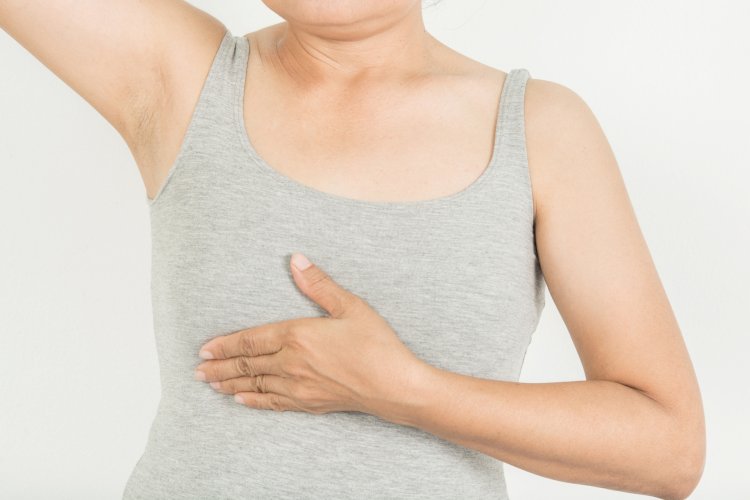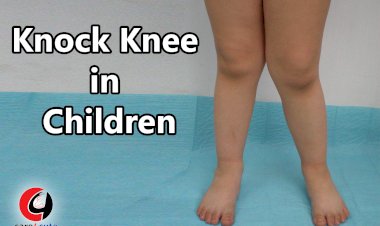Breast self-Examinations what is the significance and how to perform it?
Are you curious about the importance of breast self-examination? Learn about its significance and how to perform it.

Breast self-Examinations what is the signification and how to perform it?
Breast self-examination is done for breast awareness to inspect your breasts. It is done on your own. It helps in enhancing breast awareness and is done by your hands and eyes. If you feel any change in the look or touch of your breast, then you should discuss it with your doctor. A lot of breast changes found in self-exam are from benign causes, while other signal severe health condition.
Some doctors believe that women are more familiar with their breasts; hence they will understand its normality and prompt changes if any.
Significance of breast self-exam
A breast self-exam is basically done to raise breast awareness. It helps a woman to understand the original feel and look of her breasts. And with time, if any changes occur, then she may compare it and point it out and report it to her doctor. There are situations which change your breast like breast cancer.
Thought breast self-exam idea isn’t 100% reliable to detect cancer, but it has helped a number of women to discover breast lumps and seek immediate medical help.
How to conduct a breast self-exam?
Touch and assess
See the outer half your right breast. Lie down towards your left side and check out right breast. Keep your right hand and palm on your head. See if your breast lies flat on your chest. It is easier and comfier if you get a pillow behind your back. Now use your three middle fingers and move them in circle on your breast. You will feel all sides of your breast tissue. Do it three times, once lightly, once medium and once dense.
Do not lift your finger while moving and make sure you feel every area fully. Carefully, evaluate the nipple area too using similar circular pressure, but do not squeeze. Likewise, examine the other parts of the breast tissue from the top to the bottom. Move your fingers in circle from your collar bone to shoulder. Perform the activity similarly on your left breast with your right hand.
See and assess
Next, stand in front of a big mirror and analyze your breasts closely in different postures, view it from the left, from the right as well as from the front. Look for changes in:
- Shape: Compare one breast with another. One breast may appear slightly bigger than the other, but you will not notice any sudden changes here.
- Skin: Look out for redness, rashes, dimpling or any change in appearance.
- Nipples: Check for any changes in your nipples like scaliness, itchiness, and swelling, any kind of discharge or inversion.
- Veins pattern: See if you notice any increase in number or size of veins in comparison to the other breast.
When analyzing your breasts, some of the tips to consider are mentioned below:
- Make use of your finger pads. Do not use the tips of your three middle fingers for evaluation. If you find it difficult to use finger pads, then use that part of your hand which is more sensitive like palms.
- Make use of different pressure level. The aim is to feel your breasts at different depths with different pressure levels on your breast tissue. Start with using light pressure to assess the tissue closest to your skin, then medium pressure and finally firm pressure to know the most inner tissue.
- Never rush and take as much time as you need. It may take several minutes to analyze your breasts.
- Have a specific pattern. Use a particular technique to assess your entire breast. You can start from your collar bone and evaluate that section and then move your hands towards your nipples slowly.
If you face any kind of problem in examining your breasts utilizing this technique, then ask your doctor to illustrate how to conduct a breast self-exam.
Verdict
A lot of women discover lump or change in their breasts. Sometimes these changes occur because of your menstrual cycles. If you witness any change or lump in your breast, do not panic. Breast feels different at different places. Consult a doctor and get right diagnosis. Remember, the shape, size and firmness of your breast does change with your age.
Breast self-Examinations what is the signification and how to perform it?
Breast self-examination is done for breast awareness to inspect your breasts. It is done on your own. It helps in enhancing breast awareness and is done by your hands and eyes. If you feel any change in the look or touch of your breast, then you should discuss it with your doctor. A lot of breast changes found in self-exam are from benign causes, while other signal severe health condition.
Some doctors believe that women are more familiar with their breasts; hence they will understand its normality and prompt changes if any.
Significance of breast self-exam
A breast self-exam is basically done to raise breast awareness. It helps a woman to understand the original feel and look of her breasts. And with time, if any changes occur, then she may compare it and point it out and report it to her doctor. There are situations which change your breast like breast cancer.
Thought breast self-exam idea isn’t 100% reliable to detect cancer, but it has helped a number of women to discover breast lumps and seek immediate medical help.
How to conduct a breast self-exam?
Touch and assess
See the outer half your right breast. Lie down towards your left side and check out right breast. Keep your right hand and palm on your head. See if your breast lies flat on your chest. It is easier and comfier if you get a pillow behind your back. Now use your three middle fingers and move them in circle on your breast. You will feel all sides of your breast tissue. Do it three times, once lightly, once medium and once dense.
Do not lift your finger while moving and make sure you feel every area fully. Carefully, evaluate the nipple area too using similar circular pressure, but do not squeeze. Likewise, examine the other parts of the breast tissue from the top to the bottom. Move your fingers in circle from your collar bone to shoulder. Perform the activity similarly on your left breast with your right hand.
See and assess
Next, stand in front of a big mirror and analyze your breasts closely in different postures, view it from the left, from the right as well as from the front. Look for changes in:
- Shape: Compare one breast with another. One breast may appear slightly bigger than the other, but you will not notice any sudden changes here.
- Skin: Look out for redness, rashes, dimpling or any change in appearance.
- Nipples: Check for any changes in your nipples like scaliness, itchiness, and swelling, any kind of discharge or inversion.
- Veins pattern: See if you notice any increase in number or size of veins in comparison to the other breast.
When analyzing your breasts, some of the tips to consider are mentioned below:
- Make use of your finger pads. Do not use the tips of your three middle fingers for evaluation. If you find it difficult to use finger pads, then use that part of your hand which is more sensitive like palms.
- Make use of different pressure level. The aim is to feel your breasts at different depths with different pressure levels on your breast tissue. Start with using light pressure to assess the tissue closest to your skin, then medium pressure and finally firm pressure to know the most inner tissue.
- Never rush and take as much time as you need. It may take several minutes to analyze your breasts.
- Have a specific pattern. Use a particular technique to assess your entire breast. You can start from your collar bone and evaluate that section and then move your hands towards your nipples slowly.
If you face any kind of problem in examining your breasts utilizing this technique, then ask your doctor to illustrate how to conduct a breast self-exam.
Verdict
A lot of women discover lump or change in their breasts. Sometimes these changes occur because of your menstrual cycles. If you witness any change or lump in your breast, do not panic. Breast feels different at different places. Consult a doctor and get right diagnosis. Remember, the shape, size and firmness of your breast does change with your age.
Breast self-Examinations what is the signification and how to perform it?
Breast self-examination is done for breast awareness to inspect your breasts. It is done on your own. It helps in enhancing breast awareness and is done by your hands and eyes. If you feel any change in the look or touch of your breast, then you should discuss it with your doctor. A lot of breast changes found in self-exam are from benign causes, while other signal severe health condition.
Some doctors believe that women are more familiar with their breasts; hence they will understand its normality and prompt changes if any.
Significance of breast self-exam
A breast self-exam is basically done to raise breast awareness. It helps a woman to understand the original feel and look of her breasts. And with time, if any changes occur, then she may compare it and point it out and report it to her doctor. There are situations which change your breast like breast cancer.
Thought breast self-exam idea isn’t 100% reliable to detect cancer, but it has helped a number of women to discover breast lumps and seek immediate medical help.
How to conduct a breast self-exam?
Touch and assess
See the outer half your right breast. Lie down towards your left side and check out right breast. Keep your right hand and palm on your head. See if your breast lies flat on your chest. It is easier and comfier if you get a pillow behind your back. Now use your three middle fingers and move them in circle on your breast. You will feel all sides of your breast tissue. Do it three times, once lightly, once medium and once dense.
Do not lift your finger while moving and make sure you feel every area fully. Carefully, evaluate the nipple area too using similar circular pressure, but do not squeeze. Likewise, examine the other parts of the breast tissue from the top to the bottom. Move your fingers in circle from your collar bone to shoulder. Perform the activity similarly on your left breast with your right hand.
See and assess
Next, stand in front of a big mirror and analyze your breasts closely in different postures, view it from the left, from the right as well as from the front. Look for changes in:
- Shape: Compare one breast with another. One breast may appear slightly bigger than the other, but you will not notice any sudden changes here.
- Skin: Look out for redness, rashes, dimpling or any change in appearance.
- Nipples: Check for any changes in your nipples like scaliness, itchiness, and swelling, any kind of discharge or inversion.
- Veins pattern: See if you notice any increase in number or size of veins in comparison to the other breast.
When analyzing your breasts, some of the tips to consider are mentioned below:
- Make use of your finger pads. Do not use the tips of your three middle fingers for evaluation. If you find it difficult to use finger pads, then use that part of your hand which is more sensitive like palms.
- Make use of different pressure level. The aim is to feel your breasts at different depths with different pressure levels on your breast tissue. Start with using light pressure to assess the tissue closest to your skin, then medium pressure and finally firm pressure to know the most inner tissue.
- Never rush and take as much time as you need. It may take several minutes to analyze your breasts.
- Have a specific pattern. Use a particular technique to assess your entire breast. You can start from your collar bone and evaluate that section and then move your hands towards your nipples slowly.
If you face any kind of problem in examining your breasts utilizing this technique, then ask your doctor to illustrate how to conduct a breast self-exam.
Verdict
A lot of women discover lump or change in their breasts. Sometimes these changes occur because of your menstrual cycles. If you witness any change or lump in your breast, do not panic. Breast feels different at different places. Consult a doctor and get right diagnosis. Remember, the shape, size and firmness of your breast does change with your age.







































Comments (0)